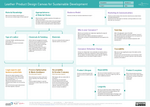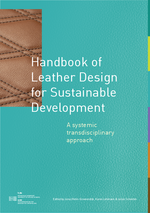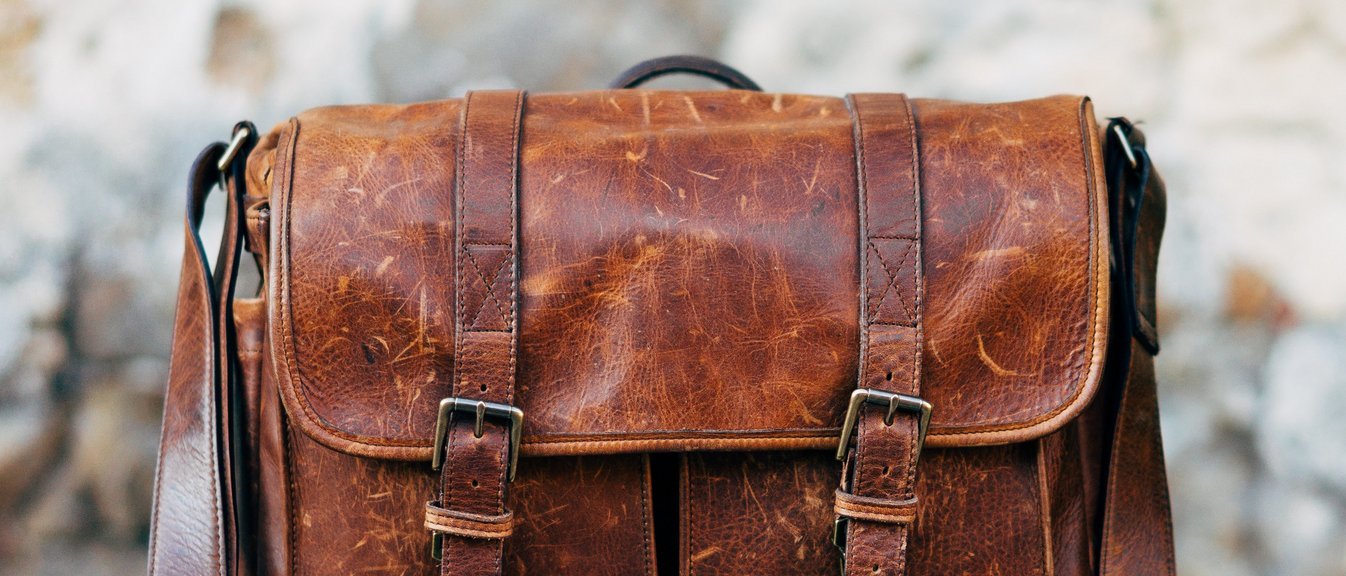
Leder-Designguidelines für Nachhaltige Entwicklung
Teilprojekt 4
Results of Subproject
Two hands-on tools for industry and academia to inform their product design processes
Focusing on the role of product- and service design in the context of a more sustainable leather chemistry, this subproject ended with two open access tools for industry and academia alike: The “Handbook of Leather Design for Sustainable Development” is a comprehensive compendium written by experts from industry, academia and NGOs. It covers on 242 pages in six chapters a broad range of topics including the leather supply chains, historical aspects and consumer psychology.
A spin-off of this document is the “Leather Product Design Canvas” – an A3-PDF template that aims at supporting the product design process by broadening the scope and highlighting relevant topics, interrelations and key questions. A manual can be found in the Handbook on page 201.
Both tools have been field tested in an international design competition and mentoring program organised by the project team. 14 participants from 4 countries received an extensive mentoring by experts form industry and academia.
Inhalte nur in English verfügbar
Die folgenden Erläuterungen zum Teilprojekt werden ausschließlich in englischer Sprache angeboten. Wenn Sie deutschsprache Informationen benötigen, wenden Sie sich bitte an den Verantwortlichen für dieses Teilprojekt.
Um zu diesem Teilprojekt informiert zu bleiben, abonnieren Sie auch einfach unseren Newsletter.
Challenges
Leather is a complex material with many subcategories regarding the type of leather, tanning processes applied, the hides used and many other aspects. Used in leather goods such as shoes, bags and furniture, this complexity is even increased by design decisions regarding the sourcing of the material, tanning agents but also conceptual and aesthetic features such as the connection of materials (e.g. clueing and stitching) and finishing.
In a wider sense, there are two overarching perspectives from which leather goods can be designed and produced in a more sustainable way.
1. General Aspects of Sustainable Development in Leather Goods
Leather by default offers potentials to render a product more sustainable in contrast to faux leather or other materials. These potentials relate to the genuine characteristic and functionality of the material leather. For instance, the process of tanning aims at conserving raw hides and rendering them durable. In this way, when processed according to the state of the art in leather manufacturing, leather can be seen as a long-lasting and easy to repair material that poses a good material base for the approach of design for longevity. Furthermore, based on the current global consumption patterns regarding meat and dairy products, leather is made from resources that would other wise end up as waste. It relates to an ancient history of leather and cultural practises and thus offers design potentials for design strategies such as product attachment.
2. Specific Properties and Potentials of “Sustainable Leather”
As of now, there is a controversial discourse on the notion of “more sustainable leather” and the proper definition of this term. This term might describe a type of leather that differs from “conventional leather” in terms of chemicals used, traceability of hides and chemicals, working conditions and transparency throughout the supply chains and towards the consumers resulting in reduced environmental and social impacts. Especially with regards to the use of specific chemicals and the avoidance of certain chemicals and processes (e.g. tanning agents or finishing layers), “more sustainable leather” might display specific functional and aesthetic characteristics (e.g. sensitivity against UV-light and water, need for maintenance, etc.). This requires a corresponding use and design appropriate to the material that makes use of its particular aesthetic features as well as target-oriented marketing instruments. Design and the associated selection and sourcing of materials are inseparably linked to issues of consumer behaviour, specific material properties, areas of application and business models.
Leder-Design-Guidelines für Nachhaltige Entwicklung (Teilprojekt 4)
Objective & project description
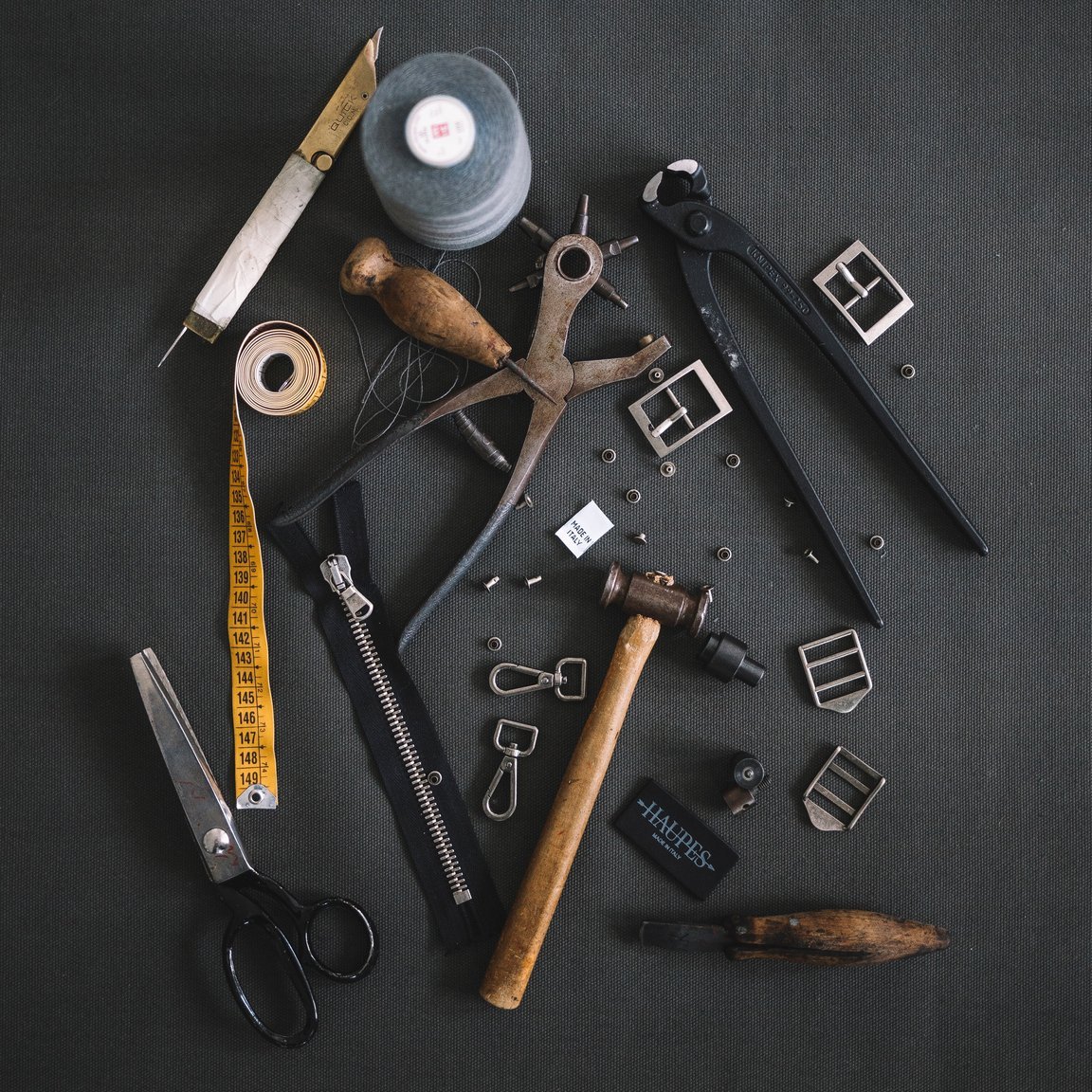
In an iterative and interactive process the project members (representatives from various parts of the leather supply chains) agreed to the following „project briefing“. This briefing shall be the point of reference throughout the project phase.
This project aims at...
... (#1) open access design guidelines for the development of more sustainable leather goods. Specific properties of ”more sustainable leather“ (tbd), over the entire product life, as well as generall aspects of the use of (tdb) leather as a material are taken into account.
The term ”guidelines“ refers to a set of principles and techniques that help designing and manufacturing more sustainable leather goods. The guidelines are not meant to be strict formulars but merely impulses to improve design processes in favour of sustainable development.
These guidelines will then (#2) be applied to one or more particular product(s). They shall be used as a pilot project which will allow to evaluate the guidelines‘ usability.
Research Questions
|
How can the use of leather as a material in consumer goods support sustainable development? |
|
What are the specific characteristics, properties and advantages/disadvantages of different types of sustainably produced leather? |
|
How can the specific properties, potentials and limitations of sustainably produced leather be optimally exploited in product development and use? |
|
Which design principles (e.g. technical construction of the product, form-fit, connection between parts and materials, etc.) promote aspects of sustainable development (e.g. robustness, longevity, reparability, recyclability, etc.)? |
|
Which Product Service Systems can be derived from this (e.g. #circular economy) and what special requirements do these PSS place on material, product, supplier and supply chain? |
Structure
A tandem consisting of one representative from the Darmstadt University of Applied Sciences and one from practise coordinates the project. Anyone interested can participate in the project.
The cooperation takes place via meetings / web conferences / workshops.
|
Panel-Koordination |
|
|
Für die Hochschule Darmstadt |
|
|
Für die Praxis |
Projektfortschritte

Vorarbeiten
Basierend auf umfangreichen Vorarbeiten (u.a. Szenarioprozess, Strategie-Workshop, Theory of Change) wurde das Teilprojekt "Leder-Design-Guidelines für Nachhaltige Entwicklung" gemeinsam mit Vertretern der Lederlieferketten konzipiert und im Rahmen der Kick-Offkonferenz in Juni 2020 vorgestellt.
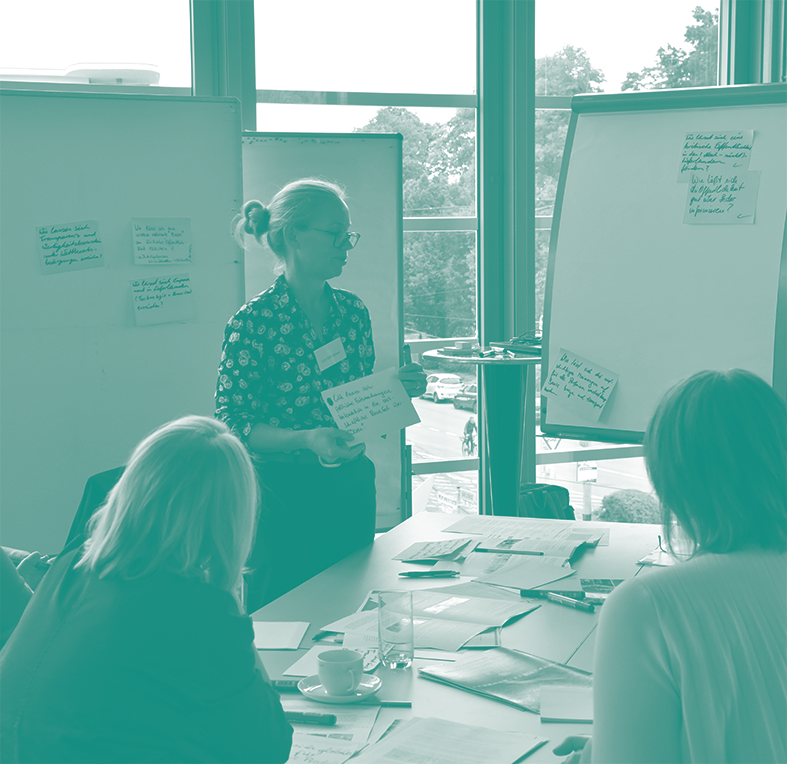
Workshop #1
Im ersten Workshop des Teilprojektes wurden Projektziel und Arbeitsmodus gemeinsam definiert und in einem Briefing festgehalten. Ebenso wurde eine grundlegende Struktur der Guidelines mit Hilfe eines Rasters entwickelt.
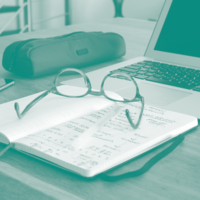
Review Phase #1
In der ersten Review Phase konnten Projekt-Mitglieder weiteren Input zu den Ergebnissen aus Workshop #1 geben. So wurden die Inhalte weiterentwickelt und ein gemeinsames Projektverständnis aufgebaut.

Workshop #2
Im zweiten Workshop wurden zunächst die Zusammenhänge und Synergie-Potentiale zwischen diesem Teilprojekt und den anderen drei Teilprojekten erarbeitet. Anschließend wurde die erarbeitete Struktur der Guidelines verfeinert und ersten Methoden und Fallbeispiele innerhalb dieser Struktur gesammelt.

Review Phase #2
In der zweiten Review Phase wurden die im Workshop erarbeiteten Zusammenhänge zwischen allen vier Teilprojekten konkretisiert. Projekt-Mitglieder wurden aufgefordert relevante Design-Methoden und Fallbeispiele für die Guidelines zusammenzutragen.

Workshop #3
Workshop #3 markiert einen Wendepunkt im Projektverlauf. Nach der bisherigen Gestaltung der groben Struktur der Guidelines und einer ersten Methodensammlung wurde der konkrete inhaltliche Aufbau der Guidelines kokreativ weiterentwickelt und die Zuständigkeiten für verschiedene Teile der Guidelines unter den Mitgliedern aufgeteilt. Damit verändert sich der Arbeitsmodus zu einem primär asynchronen Prozess, der auf zunächst auf die Verschriftlichung der Guidelineinhalte abzielt.

Review Phase #3 (Schreibphase)
Die dritte Review Phase bestand hauptsächlich im eigentlichen Schreibprozess in kleinere Co-AutorInnen-Teams. In diesem Zusammenhang wurde in der Reviewphase ein "Author's Guide" herausgegeben, der den Schreibprozess unterstützen sollte.

Workshop #4
Workshop #4 befasste sich sowohl im Plenum wie auch in Kleingruppen mit der konkreten Arbeit an den unmittelbaren Textdokumenten der einzelnen Co-AutorInnen-Teams. Die Texte wurden von zuvor ausgewählten internen Reviewern begutachtet und im Workshop weiterentwickelt.

Asynchronous Writing & Reviewing Process
In this final writing and reviewing process the groups of co-authors continued to elaborate on the various chapters of the "Handbook of Leather Design for Sustainable Development". This process was supported by external proofreading and copyediting before the final manuscript was layouted and prepared for publication.
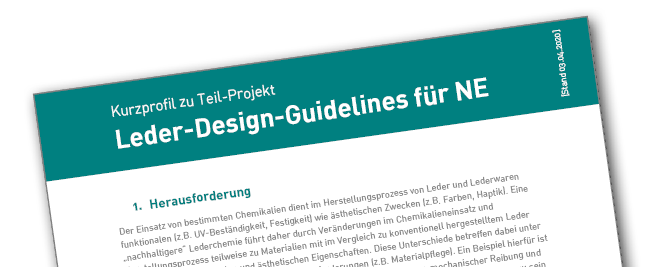
Laden Sie hier eine übersichtliche Zusammenfassung des Teilprojektes herunter.
